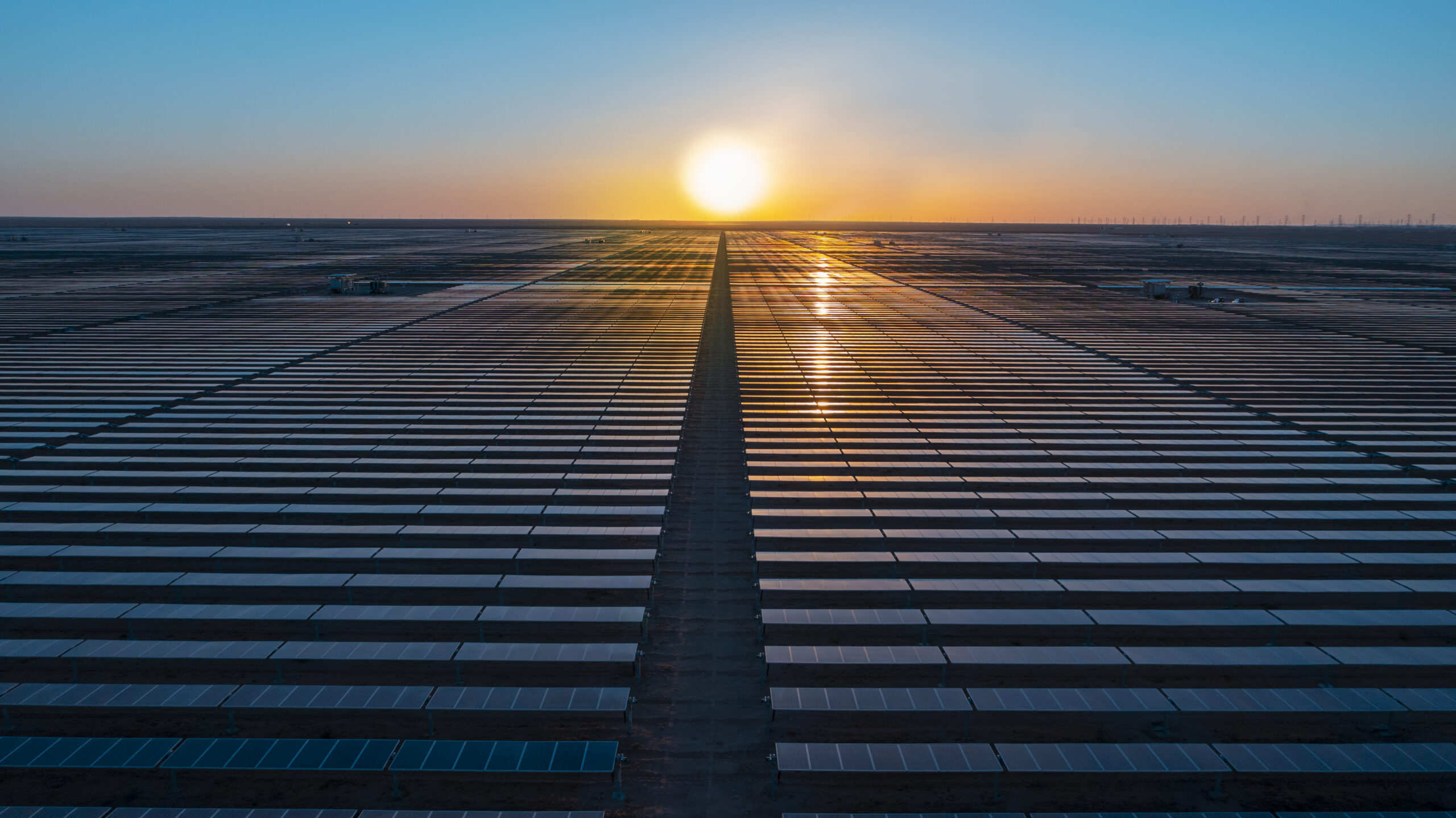Welcome to Climate Tech Pulse, your daily dose of market intelligence helping fuel the fight against climate change. From groundbreaking investments to cutting-edge research, we’re bringing you the latest in climate tech that’s shaping our future.
Don’t miss out on tomorrow’s climate solutions – subscribe now to stay ahead of the curve! https://lnkd.in/dwr7B9XJ
Today’s newsletter:
🔝Today’s Top Story: Canadian Nuclear Laboratories (CNL) is launching two pioneering projects focused on creating low-carbon synthetic diesel and sustainable aviation fuel.

📊 Today’s Data Point: Data insights on public opinions on economic effects of climate policies in the US.
🌳 Climate Insider Intelligence: Climate Insider’s food and agriculture market map.
Canadian Nuclear Laboratories Secures $4.9 Million to Develop Low-Carbon Synthetic Fuels
Image Credit: Canadian Biomass
Overview of Canadian Nuclear Laboratories’ Projects and Partnerships
Canadian Nuclear Laboratories (CNL) is launching two innovative projects to produce low-carbon synthetic diesel and sustainable aviation fuel. With $4.9 million in federal funding, CNL is partnering with Expander Energy, FuelCell Energy, Nuclear Promise X, and St Marys Cement to advance these initiatives. These projects aim to support Canada’s transport sector and contribute to the country’s zero-emissions future.
Project 1: Biomass and HTSE-Based Synthetic Diesel Production
The first project will assess the economic viability of producing synthetic diesel using biomass gasification combined with high-temperature steam electrolysis (HTSE). This “e-Syn” process integrates water electrolysis into bio-synthetic fuel production, creating Bio-SynDiesel and Bio-SynJet fuels with very low life-cycle carbon intensity. The project seeks to identify suitable sites for a plant capable of producing 30 million liters of synthetic fuel annually, with plans for national and global scale-up.
Project 2: Co-Electrolysis for Synthesis Gas Production
The second project focuses on producing synthesis gas directly from water and carbon dioxide through co-electrolysis. A pilot 5 kWe electrolyzer will be installed at St Marys Cement to capture CO2 emissions from the plant’s flue gas stream and produce synthesis gas. This gas can then be converted into e-fuels such as Bio-SynDiesel and Bio-SynJet. After successful pilot tests, the project will progress to developing a conceptual design for a large-scale commercial facility.
Looking Ahead
Canadian Nuclear Laboratories’ innovative projects mark a significant shift in nuclear energy’s role in decarbonization efforts. By using nuclear technology to produce low-carbon synthetic fuels, these initiatives showcase nuclear power’s versatility beyond electricity generation. As nations strive for net-zero targets, such advances could establish nuclear energy as a key player in hard-to-decarbonize sectors like transportation. This may speed up the global shift to a carbon-neutral economy.
Quote of the Day
“Synthetic fuels aren’t talked about quite as much as renewables and other clean energy technologies, but they come with significant environmental benefits given their production method. There is no shortage of carbon sources that we can leverage to produce this fuel, whether it is through direct air capture or biomass — such as wood waste, municipal waste or even agricultural waste. The infrastructure already exists to deploy them, and they require no change to engine technology.”
- Stephen Bushby, Nuclear Laboratories’ VP of science and technology.
Significance
Stephen’s perspective reveals a strategic view on synthetic fuels. He identifies them as a bridging technology in the clean energy transition, highlighting their dual advantages of environmental benefits and immediate applicability. The emphasis on utilizing existing infrastructure and diverse carbon sources underscores the practicality of this approach. This positioning suggests that synthetic fuels could play a crucial role in reducing emissions in the short to medium term, while more radical technological shifts are still in development.
Market Movers
- Fortescue Metals Group’s $22 million investment in HyTerra aims to secure a significant stake in the white hydrogen sector, potentially advancing global industrial decarbonization by funding exploration and development of non-polluting hydrogen resources in the US. Read More
- A $198,116 investment announced on August 26 will support Medicine Hat’s transition to zero-emission public transit buses by evaluating the economic, technological, and environmental aspects of fleet electrification, and addressing potential risks and barriers. Read More
- Arāya Ventures, led by Rupa Popat, has raised over €9.8 million in the first close of its Arāya Super Angel Fund, aiming to secure €22.5 million for early-stage investments in sectors like health tech and climate, with a focus on providing strategic support and value-added services to startups alongside financial backing. Read More
- Wärtsilä and Norwegian shipowner Eidesvik have signed a contract to convert the vessel ‘Viking Energy’ to operate on ammonia by early 2026, making it the world’s first ammonia-fueled ship and highlighting ammonia’s potential as a key alternative fuel in the shipping industry’s path to decarbonization. Read More
Tech Spotlight
University of São Paulo’s Study on Climate-Smart Agriculture (CSA) and Greenhouse Gas (GHG) Emissions
Image Credit: University of São Paulo
A recent study by the University of São Paulo (USP) illuminates the impact of climate-smart agriculture (CSA) practices on Brazil’s greenhouse gas emissions. This research, published in the Journal of Cleaner Production, was led by the Center for Nuclear Energy in Agriculture (CENA-USP) and the Luiz de Queiroz College of Agriculture (ESALQ-USP). It examines how CSA methods—designed to enhance farming sustainability and resilience—affect GHG emissions in Brazil.
Commercial & Technical Viability
- GHG Reduction: Converting to Climate-Smart Agriculture (CSA) practices, particularly integrated production systems, shows promise in reducing greenhouse gas emissions. This includes decreasing enteric methane per product and increasing soil methane sink capacity.
- Data Gaps: A critical lack of field data in Brazil, especially in the North and Northeast regions, limits the generalization of findings across different biomes.
- Methodological Needs: More frequent and detailed on-farm measurements of CO2, CH4, and N2O are necessary. Improved precision and extended research are crucial for accurate carbon balance calculations and integration into markets.
Environmental Impact & Scaling Potential
- Nature-Based Solutions: CSA offers substantial greenhouse gas reductions and soil health improvements, enhancing agricultural resilience.
- Policy Implications: These findings inform Brazil’s greenhouse gas inventory and policy development, supporting the advancement of sustainable agriculture.
- Broader Applications: Addressing data gaps could extend CSA practices to wider agricultural contexts, potentially leading to significant environmental benefits across Brazil.
- Industry Alignment: Growing global interest in sustainable agriculture is likely to drive further CSA advancements and scaling.
Long-Term Outlook
The University of São Paulo’s research highlights opportunities to enhance Brazil’s agricultural sustainability and climate resilience. Addressing data gaps and improving methodologies could pave the way for effective CSA implementation, contributing to global greenhouse gas reduction efforts and sustainable farming innovations. Read More
Policy Pulse
This section includes global updates on climate change policy, governance and regulation.
UK Government Seeks ESO’s Expertise for Power Sector Decarbonization by 2030: A Strategic Analysis
In a significant move towards achieving its climate goals, the UK Secretary of State for Energy and Net Zero has formally requested the Electricity System Operator (ESO) to provide comprehensive guidance on decarbonizing the power sector by 2030. This request encompasses three key areas: 1) detailed pathways, 2) cost assessments, and 3) infrastructure recommendations.
Why it Matters: This strategic move positions the UK to develop a well-informed, technically sound, and economically feasible roadmap for transforming its power sector, potentially setting a precedent for other nations in their decarbonization efforts. Read More
IEA Review Praises UK’s Progress on Emissions Reductions and Clean Energy Deployment.
The International Energy Agency’s review of UK’s energy transition efforts reveals mixed results. While praising significant progress in reducing electricity emissions and deploying clean energy, it highlights a critical gap in end-use sector decarbonization.
- Electricity sector shows substantial progress
- Clean energy deployment advancing well
- End-use sectors lagging behind, risking overall climate goals
This assessment underscores the need for a more balanced approach across all economic sectors to achieve comprehensive emissions reductions and meet long-term climate targets.
Why it Matters: This development underscores the need for a more balanced approach across all economic sectors to achieve comprehensive emissions reductions and meet long-term climate targets. Read More
Today’s Climate Data Point
Public Opinions on Economic Effects of Climate Policies
Source: American Climate Policy Opinions, August 29, 2024
Recent data reveals shifting attitudes among Americans regarding the economic impact of climate policies. Here’s a concise overview of key findings:
Perceived Economic Impact of Climate Policies:
- National Economy: 36% of Americans believe addressing global warming will harm the US economy in 2024, up from 29% in 2020, but comparable to 2013 levels.
- State Economy: 34% think these policies will negatively affect their state economy, an increase from 24% in 2020.
Perceived Benefits of Climate Action:
- National Economy: 44% of Americans think climate action will benefit the national economy in 2024, similar to 2020 (48%) and 15 years ago (46%).
- State Economy: 39% believe it will help their state economy, a decline from 46% in 2020.
Key Insights:
- Increasing Skepticism: While concerns about negative economic impacts are rising, the majority still view climate action positively.
- Shifting Perspectives: The belief that climate policies will benefit the national economy remains stable, but there’s a notable drop in confidence regarding state-level benefits.
Long-Term Outlook: Public sentiment continues to evolve, reflecting broader debates on the balance between economic costs and environmental benefits. Ongoing communication and policy adjustments will be crucial in shaping future perceptions and achieving climate goals. Read More
In Other News
This section covers notable news highlights in climate tech.
- French lithium-ion startup WATTALPS has secured €11 million in Series A funding to expand its team, relocate to a larger factory, and significantly boost its manufacturing capacity, aiming to exceed €100 million in turnover within five years. Read More
- A consortium led by Norwegian company Ocean Oasis has received nearly €6 million from the EU to develop and deploy offshore desalination buoys near Gran Canaria, aiming to provide water for 15,000 people starting in January 2025. Read More
- Nu:ionic Technologies and RW Energy have signed an MOU to jointly advance hydrogen production and carbon capture projects across the U.S., with RW Energy handling project development and Nu:ionic providing modular low-carbon hydrogen equipment with integrated carbon capture. Read More
- BluSky Carbon has partnered with Cula Technologies for technical data verification and announced its listing on the OTCQB Market under the symbol “BSKCF,” leveraging Cula’s MRV platform to enhance transparency and efficiency in carbon removal processes. Read More
Climate Insider Intelligence: Food and Agriculture Market Map
What if the future of our food systems wasn’t just about feeding the planet but also about healing it?
Dive into Climate Insider’s market map as it unveils the cutting-edge startups transforming food and agriculture in the face of climate change. From biotech breakthroughs and precision farming to innovative alternative proteins and vertical farming, discover how these global pioneers are reshaping how we grow, consume, and conserve. This map isn’t just a snapshot—it’s a deep dive into the technologies and trends that promise to redefine sustainability in the F&A sector. Ready to see the future of food? Read More








